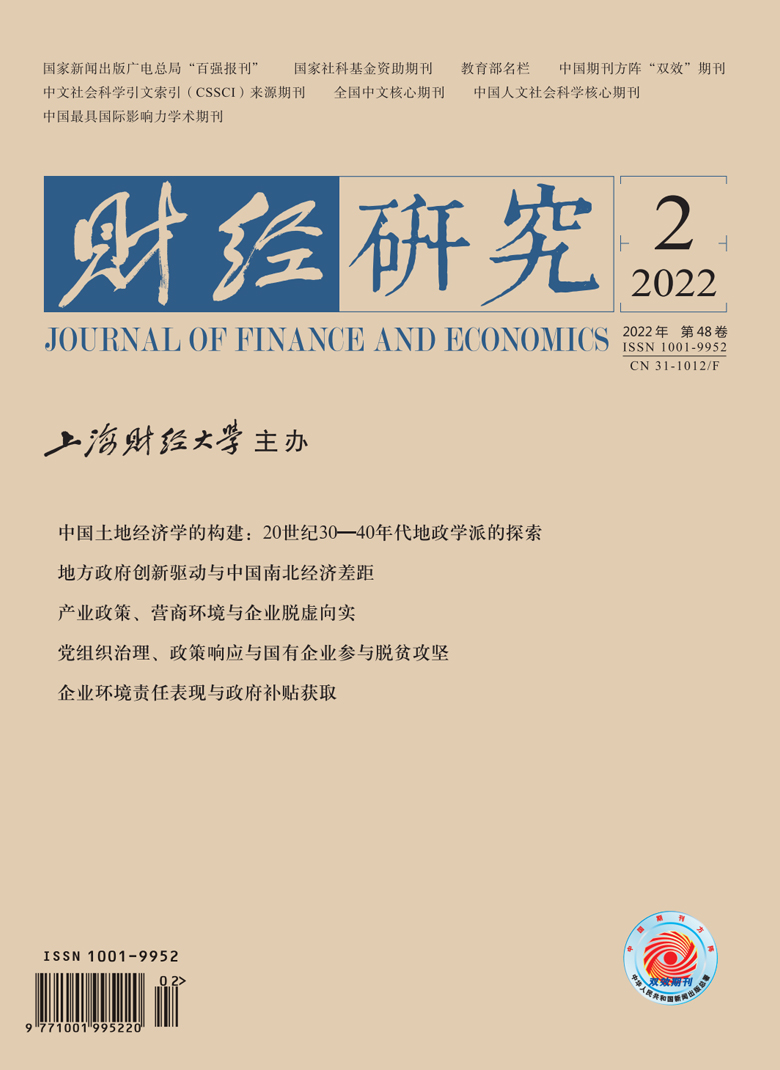改革开放新时期,共产党员的先进性主要体现在社会主义经济文化建设的先锋模范作用。文章使用行政和调查数据,结合准自然实验的分析框架,以
高校共产党员的模范效应研究——基于研究生学习同群效应的经验分析
摘要
参考文献
摘要
1 常志静,时延春. 如何发挥研究生党员的先锋模范作用[J]. 教育界,2017,(25):11−12. DOI:10.3969/j.issn.1674-9510.2017.25.006
2 陈金庞. 共产党员先进性的历史考察[J]. 党史纵览,2005,(7):25−29.
3 陈兴銮. 在实践中体现共产党员的先进性[J]. 求是,2005,(24):48.
4 杜育红,袁玉芝. 教育中的同伴效应研究述评:概念、模型与方法[J]. 教育经济评论,2016,(3):77−91.
5 侯精一. 推行普通话(国语)的回顾与前瞻[J]. 语言文字应用,1994,(4):74−78.
6 李忠杰. 中国共产党先进性建设的历史进程和主要经验[J]. 中国党政干部论坛,2005,(7):4−8. DOI:10.3969/j.issn.1006-0391.2005.07.002
7 梁耀明,何勤英. 大学生学业成绩的宿舍同伴效应分析[J]. 教育与经济,2017,(4):83−88.
8 梁作甲. 如何充分发挥高校学生党员的先锋模范作用[J]. 求实,2006,(S1):220−221.
9 刘兴平,王如高. 浅论大学生党员先锋模范作用的发挥[J]. 学校党建与思想教育,2006,(12):28−29. DOI:10.3969/j.issn.1007-5968.2006.12.011
10 权小娟. 大学成绩的同伴影响研究:基于多层次模型的分析[J]. 清华大学教育研究,2015,(5):66−76.
11 商兆鑫. 试论新时期共产党员的先进性[J]. 求实,2005,(3):23−25. DOI:10.3969/j.issn.1007-8487.2005.03.007
12 王春超,钟锦鹏. 同群效应与非认知能力−基于儿童的随机实地实验研究[J]. 经济研究,2018,(12):177−192. DOI:10.3969/j.issn.1672-5719.2018.12.157
13 王悦,邹世享. 高校党员先进性组织建设机制探析[J]. 求实,2008,(S1):41−42.
14 张羽,杨斌,张春生,等. 中国高校班集体制度对学生成绩影响的实证研究[J]. 清华大学学报(哲学社会科学版),2011,(3):133−142.
15 周有光. 汉语拼音方案的争论问题及其圆满解决[J]. 中国语文,1958,(4):172−178.
16 Carrell S E, Fullerton R L, West J E. Does your cohort matter? Measuring peer effects in college achievement[J]. Journal of Labor Economics,2009,27(3): 439−464. DOI:10.1086/600143
17 Duflo E, Dupas P, Kremer M. Peer effects, teacher incentives, and the impact of tracking: Evidence from a randomized evaluation in Kenya[J]. American Economic Review,2011,101(5): 1739−1774. DOI:10.1257/aer.101.5.1739
18 Eisenberg D, Golberstein E, Whitlock J L, et al. Social contagion of mental health: Evidence from college roommates[J]. Health Economics,2013,22(8): 965−986. DOI:10.1002/hec.2873
20 Fang G F, Wan S. Peer effects among graduate students: Evidence from China[J]. China Economic Review,2020,60: 101406. DOI:10.1016/j.chieco.2020.101406
21 Feld J, Zölitz U. Understanding peer effects: On the nature, estimation, and channels of peer effects[J]. Journal of Labor Economics,2017,35(2): 387−428. DOI:10.1086/689472
22 Gong J, Lu Y, Song H. The effect of teacher gender on students’ academic and noncognitive outcomes[J]. Journal of Labor Economics,2018,36(3): 743−778. DOI:10.1086/696203
23 Hoxby C M. Peer effects in the classroom: Learning from gender and race variation[R]. NBER Working Paper No.7867, 2000.
24 Hu F. Migrant peers in the classroom: Is the academic performance of local students negatively affected?[J]. Journal of Comparative Economics,2018,46(2): 582−597. DOI:10.1016/j.jce.2017.11.001
25 Huang W. Do ABCs get more citations than XYZs?[J]. Economic Inquiry,2015,53(1): 773−789. DOI:10.1111/ecin.12125
26 Imberman S A, Kugler A D, Sacerdote B I. Katrina’s children: Evidence on the structure of peer effects from hurricane evacuees[J]. American Economic Review,2012,102(5): 2048−2082. DOI:10.1257/aer.102.5.2048
27 Kremer M, Levy D. Peer effects and alcohol use among college students[J]. Journal of Economic Perspectives,2008,22(3): 189−206. DOI:10.1257/jep.22.3.189
28 Manski C F. Identification of endogenous social effects: The reflection problem[J]. The Review of Economic Studies,1993,60(3): 531−542. DOI:10.2307/2298123
29 Mehta N, Stinebrickner R, Stinebrickner T. Time-use and academic peer effects in college[J]. Economic Inquiry,2019,57(1): 162−171. DOI:10.1111/ecin.12730
30 Sacerdote B. Peer effects with random assignment: Results for Dartmouth roommates[J]. The Quarterly Journal of Economics,2001,116(2): 681−704. DOI:10.1162/00335530151144131
31 Sacerdote B. Experimental and quasi-experimental analysis of peer effects: Two steps forward?[J]. Annual Review of Economics,2014,6: 253−272. DOI:10.1146/annurev-economics-071813-104217
32 Zimmerman D J, Rosenblum D, Hillman P. Institutional ethos, peers and individual outcomes[R]. Discussion Paper Number 68, Williams Project on the Economics of Higher Education, 2004.
引用本文
方观富, 朱颖, 何欢浪. 高校共产党员的模范效应研究——基于研究生学习同群效应的经验分析[J]. 财经研究, 2022, 48(2): 63-77.
导出参考文献,格式为:
上一篇:跨区域经营监管与银行流动性调整





 4125
4125  3685
3685

